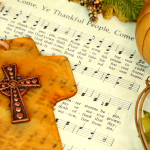What is the full order of service for a funeral?
What is the Full Order of Service for a Funeral?
A funeral is a solemn and meaningful event where friends and family gather to remember, honor, and say their final farewells to a loved one who has passed away. The order of service for a funeral outlines the sequence of events that will take place during the funeral or memorial ceremony. It serves as a guide for both the attendees and the individuals conducting the service, ensuring that everything proceeds smoothly and with the desired level of reverence.
The full order of service for a funeral can vary depending on cultural, religious, and personal preferences. However, there are several common elements typically included in most funeral services. In this comprehensive guide, we’ll walk you through the standard order of service for a funeral, providing insights into each segment.
1. Gathering and Welcome
The funeral service usually begins with a gathering of mourners at the chosen venue, whether it’s a place of worship, a funeral home, or a specific location that holds significance to the deceased. The service begins with a welcoming statement, often delivered by a clergy member, celebrant, or a designated family member or friend. This welcoming message acknowledges the purpose of the gathering and expresses gratitude for everyone’s presence.
2. Reading of Obituary
Following the welcome, an individual may read the obituary of the deceased. The obituary provides an overview of the person’s life, highlighting significant achievements, milestones, and personal attributes. It’s an opportunity to remember and celebrate the life of the departed.
3. Prayers and Religious Readings
For religious funerals, prayers and religious readings are an integral part of the service. The specific prayers and readings will depend on the faith tradition and the preferences of the deceased and their family. These readings often offer solace, hope, and guidance during a difficult time.
4. Eulogy
The eulogy is one of the most poignant segments of the funeral service. It is a heartfelt tribute to the deceased, typically delivered by a close family member or friend. The eulogy provides an opportunity to share stories, memories, and reflections about the person’s life, character, and impact on those around them.
5. Music and Hymns
Music plays a crucial role in setting the tone and evoking emotions during a funeral service. Hymns and songs, often chosen for their significance to the deceased, are performed. Some funerals also feature instrumental music, such as a solo or ensemble performance. Music can be a powerful tool for conveying emotions and honoring the memory of the departed.
6. Committal
The committal is the part of the service where the deceased is officially laid to rest. This segment can vary depending on whether the person is being buried, cremated, or interred in a mausoleum. In a burial, the casket is lowered into the ground, and final words are spoken. In a cremation, the urn may be placed in a niche or scattering garden. The committal is often accompanied by a short prayer or reflection.
7. Closing Remarks
The closing remarks offer final words of comfort and hope to the mourners. The person conducting the service may provide a concluding message, emphasizing the idea that life continues, and the memories of the departed will live on.
8. Dismissal
The dismissal is the formal end of the funeral service. Mourners are invited to leave the venue, and it’s customary for them to extend their condolences to the bereaved family before departing.
9. Reception or Gathering
Following the service, it’s common for mourners to gather for a reception or a meal. This post-funeral gathering allows attendees to support one another, share more memories, and provide comfort to the grieving family. It’s an opportunity for closure and fellowship.
10. Burial or Interment
If the deceased is to be buried, the burial or interment is typically a separate event that follows the funeral service. It may take place at a cemetery or other designated burial ground. The graveside ceremony involves lowering the casket into the grave and often includes additional prayers, readings, or a brief eulogy.
In some cases, families opt for a memorial service without a physical burial or cremation immediately following. Instead, they may choose to have the ashes scattered at a later date or interred in a niche within a columbarium.
It’s important to note that the order of service can be adapted to suit the wishes and beliefs of the deceased and their family. Some people may prefer non-religious or secular services, while others may incorporate cultural traditions or unique elements that hold special meaning.
In conclusion, the full order of service for a funeral is a deeply personal and culturally influenced event that serves as a means of paying tribute to the deceased and offering comfort to the living. Whether it follows a traditional or customized format, a funeral service is a vital part of the grieving and healing process for those left behind, providing an opportunity to remember and honor a life that has come to an end.










